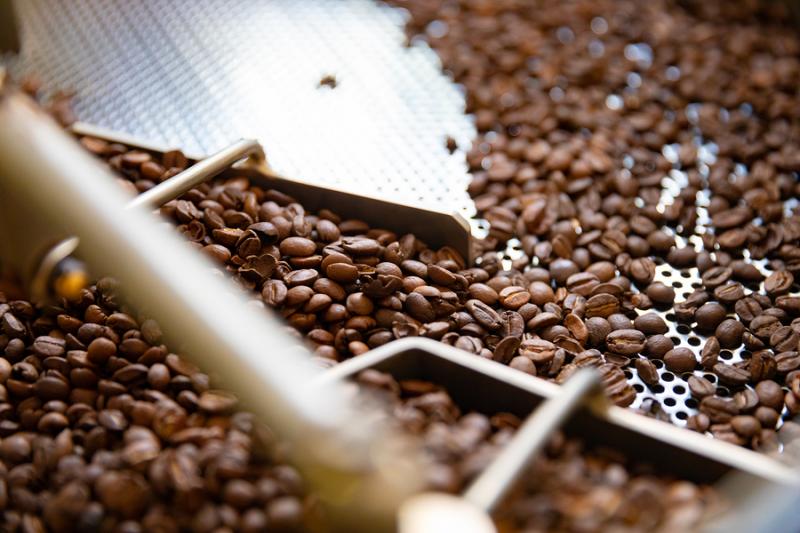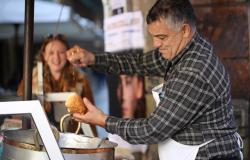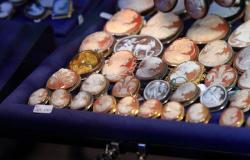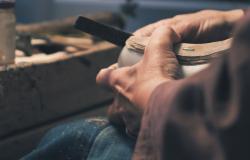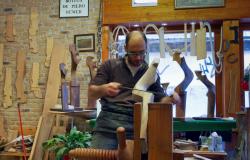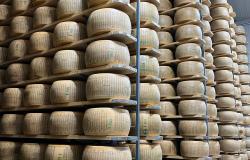In Italy, coffee is a religion with millions of worshipers. Yet, most of these devotees know nothing about the object of their devotion, despite being convinced they’re drinking the best coffee in the world.
I was one of them before I visited M’ama Caffè, a small roastery (torrefazione in Italian) based in Vignola, a sleepy town in the countryside between Bologna and Modena. M’ama Caffè was established in 2016 by a small team of friends who shared a passion for coffee and a desire to embark on an enterprise of their own, with the mission to bring back the artisanal craft of producing quality coffee and to educate consumers.
In Italy, we mostly drink espresso (and moka), and scorn every other way of drinking coffee; we gulp it down in approximately 10 seconds, often adding sugar (a no-no), leaving no time to actually taste it; we regard ourselves as coffee connoisseurs, when in fact a lot of the coffee sold in Italy is of low quality; we don’t know where the coffee comes from, and we don’t pay attention to how the barista makes it for us. (So much for being devotees.)
M’ama Caffè wants to change that.
“Our goal is to teach people how quality coffee is made, and how to savor it,” says Andrea Cassanelli, a sales associate. “We want to inspire a more conscious approach to the world of coffee, so that people can make informed choices.”
A good way to understand what goes on during the process of making quality coffee is to visit an artisan roastery.

[This is what coffee seeds look like before they're roasted and turned into beans we can brew.]
Coffee making, or, I should say, coffee roasting, which is the act of transforming the coffee seeds into beans we can brew, is crucial because it is during this process that the flavors and aromas you’ll taste in the cup are extracted. Coffee is a plant, so its seeds are full of complex sugars, fats, and acids, which are altered during roasting and will determine the final flavor.
Coffee roasting is as much art as it is science, I learn as I follow the zestful master roaster at M’ama Caffè, Gianluigi Morotti, as he gives me a tour of the roastery, located inside a nondescript building in the industrial outskirts of Vignola, where, I discover, they even make coffee for an Arabian prince.
“Each of these is a treasure,” Gigi, as his colleagues call him, says pointing at the sacks of green beans (before they’re roasted, coffee beans are green). “You may have an excellent product to start with, but if I don’t do my job well, I’ll lose some of the flavors.”
Thus, the roaster makes the difference. His is an art because, Gigi tells me, just by smelling the seed he knows what kinds of aromas and flavors may end up in the cup. He knows which seeds to select and how to process them in order to obtain the result he desires: coffee that is more or less creamy, more or less acid, more or less nutty, more or less smoky, more or less sweet.
And in that process, he is backed by science. “I base everything on data,” Gigi says, and proceeds to show me a seemingly complicated document on his computer where, daily, he keeps track of all the elements that can influence the roasting. What the document shows is the roasting curve, an important tool for the roaster because it helps him obtain a specific result that can be repeated over time by analyzing the temperature at which the coffee beans were roasted and the time they were left at that temperature, as well as technical information such as humidity, bean size, etc.

[Gianluigi Morotti, master roaster at M'ama Caffè in Vignola, working next to the roasting machine.]
Quality roasting happens when the coffee beans have a careful balance of oils, fruit acids, simple sugars, and caramelized sugars.
M’ama Caffè’s roasting machine can process up to 15 kg of coffee, while industrial machines can process up to 120 kg of coffee. Unlike in industrial processing, where the machine is left to work on its own, Gigi tells me that he remains by the side of the machine during roasting to monitor. “When the process is automatic, the figure of the roaster is lost,” he explains. And with that, a skill.
It is this craftsmanship that allows M’ama caffè to customize every coffee they make according to each client’s requests rather than making a standardized production for a large market. “We offer a range of blends and we customize them based on the taste and budget of the customer, often trying a few times before we get it just right,” explains Benedetta Sonzogni, export manager and one of M’ama Caffè founders, along with her partner Marco Martini and friend Stefania Rinaldi.
“We want to make coffee that stands out,” says Stefania.
All the work carried out in the torrefazione must result in a coffee that is pleasant to drink without sugar, that leaves a sensation of a clean mouth, that eventually leads consumers to savor coffee and to detect the flavors and the differences between one coffee and another.

[Coccolosa, one of the blends produced by M'ama Caffè - 'coccolosa' could be translated as pampering. Photo credit: M'ama Caffè Facebook page.]
It worked for me and it’s changed the way I buy and drink coffee. I’m a new kind of devotee: more discerning, and, ultimately, one that drinks coffee not only for the energy jolt, but because, much like any food or drink product made with passion and expertise, it is something to relish.
M'ama Caffè is in Vignola, Emilia-Romagna. They have a small shop on the premises. https://www.mamacaffe.it/en/home-en/
[This is the first in a series of articles we’ll run about coffee where we’ll also teach you how to taste it, the different ways of drinking coffee, what to observe when you’re at the bar to understand if the coffee you’re being served is done correctly, and more.]
